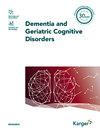健康与大脑老化研究--健康差异队列中认知正常的墨西哥裔美国老人的邻里社会经济地位与执行功能和处理速度的关系。
IF 2.2
4区 医学
Q3 CLINICAL NEUROLOGY
引用次数: 0
摘要
引言邻里社会经济地位(NSES)与整体健康有关,本研究将评估健康与大脑老化:健康差异研究(HABS-HD)中的非西班牙裔白人(NHW)和墨西哥裔美国人(MA)的邻里社会经济地位是否与认知能力有横截面关联。最终分析的样本(n=1312)年龄在 50 岁或以上,认知能力未受损,并接受了访谈、神经心理学检查、影像学检查和抽血。国家社会经济状况采用国家地区贫困指数(ADI)百分位数排名进行测量,该排名考虑了社会经济变量。执行功能和处理速度分别通过线索制作测试(A 和 B)和数字符号替换测试进行评估。结果 与白血病患者相比,白血病患者更年轻、更可能是女性、受教育程度更低、ADI 分数更高、在路径 B 中的表现更差(均 p<0.05)、APOE4+ 患病率更低(p<0.001)。居住在最贫困社区的 MA 比例高于 NHW。在对人口统计学变量和APOE4进行调整后,ADI并不能预测NHW的B径或DSS得分。结论我们的研究表明,居住在较贫困地区与 MA 的认知功能较低有关,但与 NHW 的认知功能较低无关。本文章由计算机程序翻译,如有差异,请以英文原文为准。
The association of neighborhood socioeconomic status with executive function and processing speed in cognitively normal Mexican Americans elders from the Health and Aging Brains Study - Health Disparities cohort.
INTRODUCTION
Neighborhood socioeconomic status (NSES) has been linked with overall health, and this study will evaluate whether NSES is cross-sectionally associated with cognition in non-Hispanic Whites (NHW) and Mexican Americans (MA) from the Health and Aging Brain: Health Disparities Study (HABS-HD).
METHODS
The HABS-HD is a longitudinal study conducted at the University of North Texas Health Science Center. The final sample analyzed (n=1312) were 50 years or older, with unimpaired cognition, and underwent an interview, neuropsychological examination, imaging, and blood draw. NSES was measured using the national area deprivation index (ADI) percentile ranking, which considered socioeconomic variables. Executive function and processing speed were assessed by the trail making tests (A and B) and the digit-symbol substitution test, respectively. Linear regression was used to assess the association of ADI and cognitive measures.
RESULTS
MA were younger, more likely to be female, less educated, had higher ADI scores, performed worse on trails B (all p<0.05), and have lower prevalence of APOE4+ (p<0.001), when compared to NHW. A higher percentage of MA lived in the most deprived neighborhoods than NHW. For NHW, ADI did not predict trails B or DSS scores, after adjusting for demographic variables and APOE4. For MA, ADI predicted trails A, trails B, and DSS after adjusting for demographic covariates and APOE4 status.
CONCLUSION
Our study revealed that living in an area of higher deprivation was associated with lower cognitive function in MA but not in NHW, which is important to consider in future interventions to slow cognitive decline.
求助全文
通过发布文献求助,成功后即可免费获取论文全文。
去求助
来源期刊
CiteScore
4.70
自引率
0.00%
发文量
46
审稿时长
2 months
期刊介绍:
As a unique forum devoted exclusively to the study of cognitive dysfunction, ''Dementia and Geriatric Cognitive Disorders'' concentrates on Alzheimer’s and Parkinson’s disease, Huntington’s chorea and other neurodegenerative diseases. The journal draws from diverse related research disciplines such as psychogeriatrics, neuropsychology, clinical neurology, morphology, physiology, genetic molecular biology, pathology, biochemistry, immunology, pharmacology and pharmaceutics. Strong emphasis is placed on the publication of research findings from animal studies which are complemented by clinical and therapeutic experience to give an overall appreciation of the field.

 求助内容:
求助内容: 应助结果提醒方式:
应助结果提醒方式:


